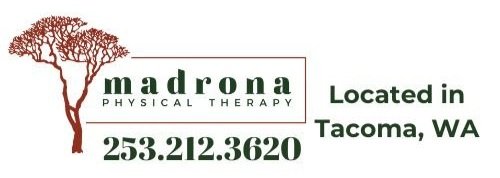Diastasis Rectus Abdominis (DRA)
by Dr. Katie Beaber, PT, DPT, COMT of Madrona Physical Therapy PLLC
I had a patient come in recently after giving birth to her daughter. She had just delivered about 8 weeks ago and was cleared by her doctor for activity. Her primary concern was a sensation of weakness in her abs. She also noticed some bulging in the middle of her belly while rolling over in bed. She had seen some posts on social media about DRA and was now concerned she had one. She told me she was scared of making it worse, and unsure of where to start.
What is DRA?
It stands for diastasis rectus abdominis, diastasis meaning “separation” and rectus abdominis meaning your abdominal muscles (think “6-pack” muscles - yes we all have them!) That separation occurs along the middle of the abdomen, and is commonly caused by pregnancy. We know that in late stages of pregnancy, nearly 100% of women have some form of DRA.
At around 6 weeks postpartum, that number drops to about 60%. Why the drop? Our bodies have an incredible capacity to heal, and we can attribute some of that to normal healing that occurs in the first 6 weeks after delivery. For about one third of women, studies suggest that DRA can persist for months or years after a delivery.
Symptoms of DRA can include:
● Seeing or feeling a bulge in the midline of your abdomen
● Seeing or feeling a gap or indent in the midline of your abdomen
● “Doming” of the abdomen occurring with abdominal exercises like crunches or planks
● Sensation of weakness with bending, lifting, or prolonged standing
● Lower back pain
I think I have one - now what?
By now I hope you have found some comfort in knowing this happens to a lot of women - you are not alone! It is never too late to address physical symptoms, whether you are early postpartum or several years down the road. There are a few strategies you can start working on in order to prevent worsening of the separation. All of these strategies involve pressure management, which is the ability to maintain good pressure in your abdomen without pushing out on the diastasis.
● Perform “log roll” technique to get up out of bed or sit up from laying down on couch
● Exhale with exertion - breathe out whenever you are lifting, pushing, or pulling, especially something heavy
● Avoid holding your breath
● Avoid pushing or straining to empty, or excessive bearing down, while you are in the bathroom
Working with a physical therapist can help you feel safe and confident in your body, and facilitate your return to exercise and other physical activity. With the patient I mentioned earlier, she did present with a moderate width DRA. Our interventions focused on hands on work, specific core activation, and posture exercises. We were able to reduce her separation, allowing the muscles in her abdomen to fire better. This helped her feel stronger with lifting and carrying her new baby, and improved her posture for breastfeeding.
Here at Madrona Physical Therapy, we specialize in pregnancy and postpartum care. We commonly see women with this condition, and develop individualized plans to help women reach their goals.
Author: Dr. Katie Beaber, PT, DPT, COMT of Madrona Physical Therapy PLLC
Sources:
https://www.ncbi.nlm.nih.gov/pmc/articles/PMC5013086/

